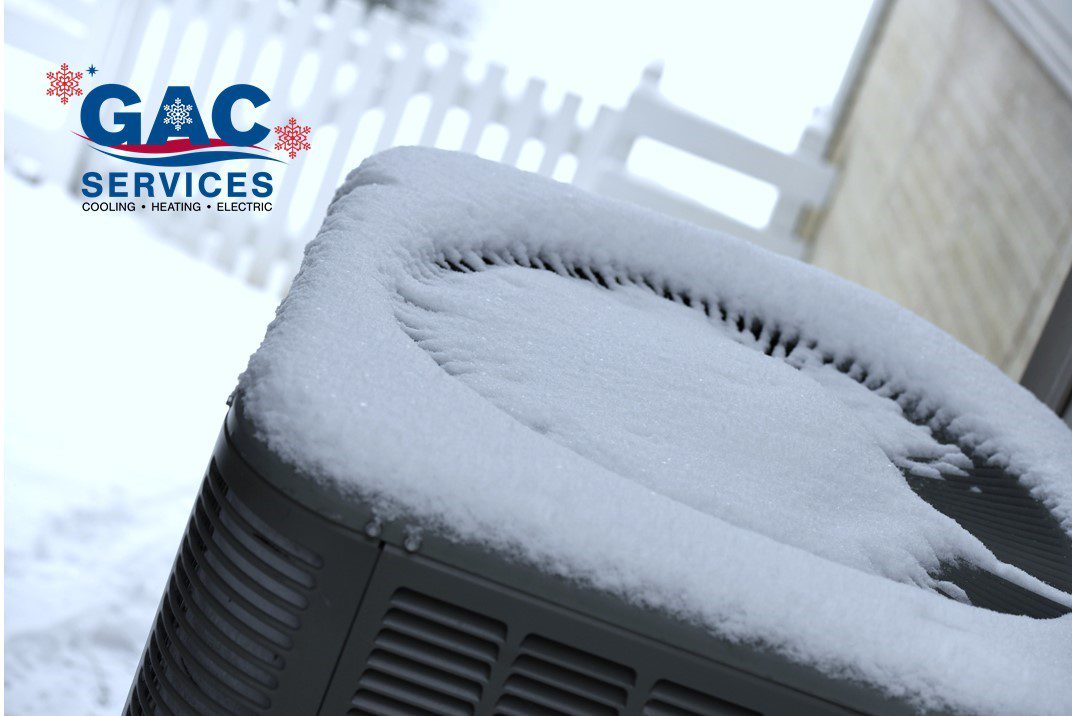
Modern heating and cooling systems are designed to withstand any harsh weather conditions that they may face. From high winds or relentless snow and rain, it’s best to take precautions to protect your units and have them last as long as possible.
No matter what inclement weather may plague your system, you need to learn how to protect your HVAC unit in the winter. Here are some tips from heating and cooling professionals to help keep your systems safe during the harsh winter months in Maryland.
What Problems Can Snow & Ice Cause to Your HVAC System?
While modern HVAC units are built to withstand the pressures and temperatures of the winter season, you still need to be diligent about their upkeep and care. If you don’t take proper care of your system, you may end up needing to replace it sooner rather than later.
Here are some of the issues snow and ice can cause in your HVAC system:
- Blocked Exhaust: Snow and ice can obstruct the furnace’s exhaust, impeding the efficient operation of the HVAC system.
- Reduced Efficiency: Accumulation of snow and ice can diminish the overall efficiency of the HVAC unit, leading to increased energy consumption.
- Risk of Carbon Monoxide: Blocked exhaust may contribute to carbon monoxide accumulation, posing a serious health risk to occupants.
- Vent Obstruction: A buildup of snow and ice may obstruct ventilation openings, affecting the proper airflow and causing strain on the HVAC system.
- Exterior Unit Damage: Excess snow and ice can potentially damage the exterior components of the HVAC unit, impacting its performance and longevity.
4 HVAC Tips for Winter
As the snow covers the ground outside and you see a blanket of white, it may be easy to forget about your heating and cooling systems. When approaching the winter season, it’s important to have your HVAC systems cleaned so they will run efficiently when in use.
From clearing snow off of your units to making sure your vents are clear, take a look at our winter HVAC checklist and learn how you can make your units more reliable and safe.
1. Don’t Let Snow and Ice Build Up
Ensuring that there is no snow or ice on your HVAC unit in winter is crucial for preventing damage. After a heavy snowfall, create a clear space of at least 18 inches around the unit to ensure proper functioning. Keep both the top and sides of the unit uncovered, and when removing ice, avoid using sharp objects to prevent damage to the coils and fins. These fins play a vital role in heat transfer within the condenser, making their care essential.
Allowing snow on the HVAC unit can lead to issues like the system freezing or an emergency shutdown. In such scenarios, not only does your home lose heat, but frozen pipes can also result in plumbing problems.
Additionally, regularly remove hanging icicles from any part of your home over the HVAC unit to prevent potentially expensive damage. Following these precautions ensures your HVAC system operates efficiently throughout winter, minimizing the risk of disruptions and maintaining a comfortable home environment.
2. Keep the Exhaust Clear
Large piles of snow can block the exhaust of your furnace, posing a significant threat to how it operates. Beyond the inconvenience of a malfunctioning unit, there’s a more critical concern: a blocked exhaust can lead to carbon monoxide seeping into your home, posing serious health risks for your family.
While many heating systems come equipped with safety measures for such scenarios, prioritizing safety remains essential. Taking preventive steps, especially during winter, is crucial for maintaining a functional and secure HVAC system.
Regular HVAC winter maintenance not only ensures optimal performance but also safeguards against potential hazards, such as blocked exhausts, promoting the well-being of your household.
3. Keep the Air Intake Vent Clear
Just like you want to let exhaust fumes out, you want to make sure that new air can be brought into your home. If snow is blocking your intake vents, your system will be starved for the air it needs for combustion.
If you notice that your furnace is always trying to start up but is not turning on, you might want to go outside to make sure that your intake vent is clear. Then, you can turn the system off, give it a minute, and turn it back on to reset the unit.
Keep in mind that your HVAC system is made to withstand snow and ice, but that does not mean that the unit won’t be damaged by extreme weather and lack proper care during the harsh winter months.
Protecting your HVAC system from snow and ice is simple, and it is beneficial to take a few minutes during and after a snowfall to make sure that your system is clear.
Don’t forget to change the furnace filter regularly, more often during winter when the furnace is continually running. A dirty filter can make your furnace fan work harder and increase your utility bills. The best way to prepare your HVAC during winter is to regularly replace your air filters.
4. Check for Obstructions in The Exhaust
Snow accumulation can obstruct your furnace’s exhaust, diminishing the efficiency of your HVAC system. This may result in the potential accumulation of carbon monoxide in your home.
While modern systems incorporate safety features to address this, it’s prudent to manually inspect for any blockages as an additional precaution. Regularly examining your vents, exhaust, and outdoor unit is essential to shield your HVAC system from potential damage caused by snow and ice.
If you’re concerned that you need heating repairs or air conditioning repairs in Gaithersburg, Frederick County, Montgomery County, and Howard County, Maryland, our team of technicians from GAC Services is here to help. When you need winter HVAC maintenance, contact us to schedule an appointment with our experts.


